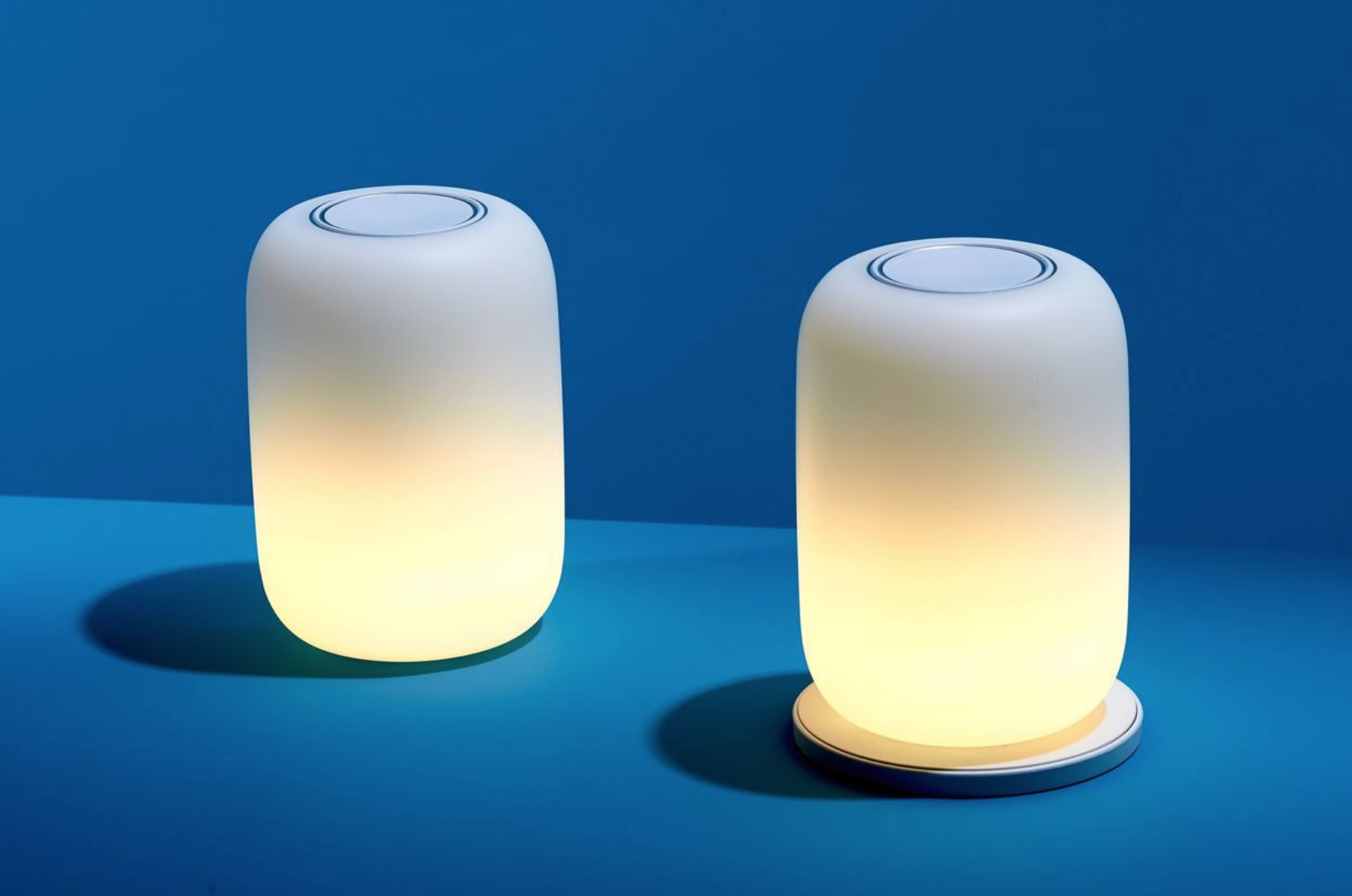A Bedside Lamp Designed To Help You Sleep Better (#GotBitcoin?)
Can a sensitive bedside light aid your nightly wind-down and help you wake more peacefully? A Bedside Lamp Designed To Help You Sleep Better (#GotBitcoin?)
I’D LIKE TO THINK I’m good in bed: Sleep comes easily and lasts 8 hours, uninterrupted. But I need optimal conditions: a cool room with a whirring fan and total darkness. Harvard sleep researcher Steven Lockley, a man seemingly after my own heart, found that most lights, whether ultraviolet or artificial, keep us awake by suppressing the body’s secretion of melatonin, a hormone that influences circadian rhythms.
The exception? Red- and orange-hued light, like the glows of sunset and sunrise, something recent innovations aim to replicate. Casper’s aptly named Glow Light (from $129, casper.com), for example, gradually dims until eventually blinking out, purportedly to lull you to sleep. In the morning, it brightens to a warm color temperature of 2700K, which Casper hopes will gently wake you.
Each unobtrusive, matte-white cylindrical Glow Light charges wirelessly on a coaster-size dock and has a simple corresponding app you can use to schedule wake times and to sync up multiple Glow lights.
As you flip the lamp to start your evening wind-down (adjustable in 15-minute increments), it can be controlled through touch: Tap a button on whichever end is facing up to pause its dimming process if you want to finish a book chapter; slowly twist the light to dim or brighten it to your desired level; or give it a slight shake for “nighttime mode,” turning it into a portable lamp that can guide your path to a midnight snack.
Unfortunately, I slumber so deeply in the darkness of my “alcove” floor plan—that is, one with a windowless bedroom—that waking up is like emerging from a long winter’s hibernation. While pleasant, the light’s morning glow was far more ignorable than the successive blaring iPhone alarms I usually require. I promptly flipped the device to shut it off and went right back to sleep.
I happily adopted it as a bedtime ritual, however, and found myself craving its wind-down period, which I used to read or to quiet my thoughts. The comparable Philips Somneo (from $180, usa.philips.com) further encourages nightly relaxation with a feature that pulses its light for guided breathing to simulate the effects of meditation. And then, of course, it’s lights out.
Related Articles:
When Is It Safe For Children To Start Strength Training? (#GotBitcoin?)
33 Resistance Band Exercises You Can Do Literally Anywhere (#GotBitcoin?)
She’s Powerlifting At 76, So You’re Officially Out Of Excuses (#GotBitcoin?)
Secrets of ‘UltraGeezer,’ Earth’s Fastest 70-Year-Old Distance Runner (#GotBitcoin?)
33 Resistance Band Exercises You Can Do Literally Anywhere (#GotBitcoin?)
The Benefits of Grounding or Earthing For Improved Health (Dramatically Reduces Inflammation)
Ayurvedic (Holistic) Medicine Has 5000 Years Of Experience Over Western Medicine (#GotBitcoin?)
Understanding The Gut Microbiome
Food, The Gut’s Microbiome And The FDA’s Regulatory Framework
Germ-Killing Brands Now Want To Sell You Germs (#GotBitcoin?)
Pocket-Sized Spectrometers Reveal What’s In Our Foods, Medicines, Beverages, etc..
The Complete Guide To The Science Of Circadian Rhythms (#GotBitcoin?)
Billionaire is Turning Heads With Novel Approach To Fighting Cancer (#GotBitcoin?)
Fighting Cancer By Releasing The Brakes On The Immune System (#GotBitcoin?)
Over-Diagnosis And Over-Treatment Of Cancer In America Reaches Crisis Levels (#GotBitcoin?)
Cancer Super-Survivors Use Their Own Bodies To Fight The Disease (#GotBitcoin?)
Microbiome Live News
@metagenomics


Leave a Reply
You must be logged in to post a comment.